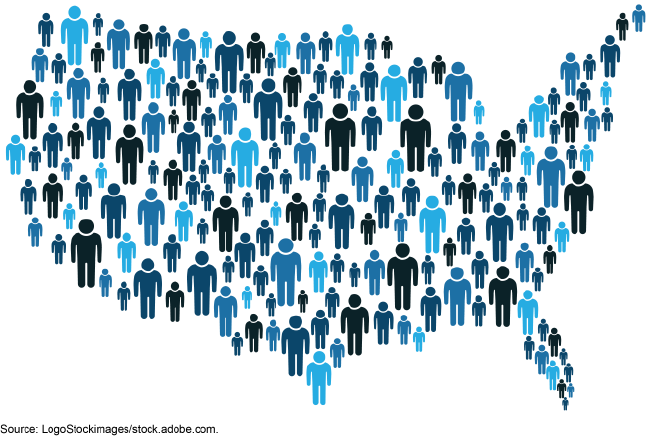Population Estimates: Results of the Census Bureau's Challenge Program
Fast Facts
When the Census Bureau isn't doing a decennial census, it estimates population and numbers of housing units, using various sources, annually. State, local, and tribal governments use the estimates to allocate federal funds, among other purposes.
Governments can challenge these annual population estimates if they disagree with them. In 2023, government entities submitted 12 challenges. The Bureau revised population estimates in response to seven of the challenges. The other five challenges submitted didn't meet Bureau requirements or were withdrawn.
This page was updated on November 12, 2024 to correct a date.

Highlights
What GAO Found
Between decennial censuses, the Census Bureau (Bureau) Population Estimates Program (PEP) annually disseminates population and housing unit estimates. These annual population estimates are used by state, local, and tribal governments (governmental units) to allocate federal funds, among other purposes. Following the 2020 Census, the Bureau modified its methodology for developing estimates, in part, because of challenges created by the pandemic.
Historically, the base for the annual population estimate was the latest decennial census. The Bureau is now using a "blended" population base that, in addition to 2020 Census data, relies on other sources of data, such as demographic analysis (DA). DA estimates are developed from current and historical vital records and other sources. DA estimates are independent from the 2020 Census.
According to Bureau officials, there are about 10 ongoing research projects to improve the annual population and housing unit estimates, some of which are multiyear projects. For example, one of those projects is researching how to improve the estimates of the foreign-born population.
The Population Estimates Challenge Program (PECP) provides state and local governments the ability to challenge annual population estimates. The Bureau solicited and incorporated feedback from the public to improve the PECP through the Federal Register. For example, the Bureau announced, in the Federal Register, that governmental units are not limited to submitting a challenge digitally. They may still submit a physical copy of the challenge paperwork to the Bureau. According to the public comments, governmental units want the Bureau to accept more data sources when a challenge is submitted. Bureau officials said they are open to accepting more data sources for challenges that are supported by research.
The Bureau refers to each population estimate series as a "vintage." For example, Vintage 2022 covers April 1, 2020, through July 1, 2022. The Bureau released the first set of results from the PECP for Vintage 2022 on February 28, 2024.
For Vintage 2022, governmental units submitted 12 challenges, according to the Bureau. The Bureau revised population estimates in response to seven of those challenges made through the PECP. Bureau officials told us that of those seven challenges, all localities saw their population change in the direction they expected. Five saw their populations increase and two saw their populations decrease. The other five challenges submitted, that were not accepted, either did not meet Bureau requirements or the locality withdrew the challenge. For example, feedback was given to two of the counties that did not meet Bureau requirements. In both cases the Bureau received a revised submission, but the counties still did not meet the Bureau's guidelines.
Why GAO Did This Study
A House Report that accompanied the Commerce, Justice, Science, and Related Agencies Appropriations Bill 2023 includes a provision for GAO to review the Bureau's efforts and provide a briefing within 180 days of the Bureau completing its related work on the PECP. We provided that briefing for the Commerce, Justice, Science, and Related Agencies Appropriations Subcommittee House of Representatives and Senate on August 26, 2024. This report summarizes the briefing and describes (1) changes that were made to the PEP and the PECP following the release of 2020 Census data, as well as other changes being considered, and (2) the first set of PECP results that were released in February 2024.
GAO reviewed key components of the PEP and PECP methodology changes following the 2020 Census and the Vintage 2022 challenge results. GAO also interviewed Bureau officials about ongoing research and testing for the PEP and PECP, and the rationale for accepting some challenges but not others.
For more information, contact Yvonne D. Jones at (202) 512-6806 or jonesy@gao.gov.
